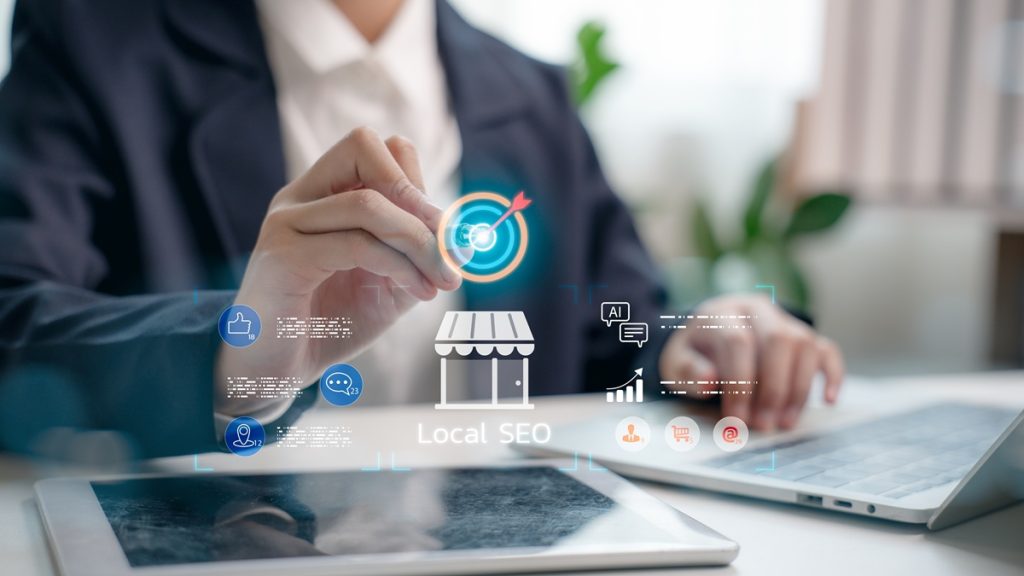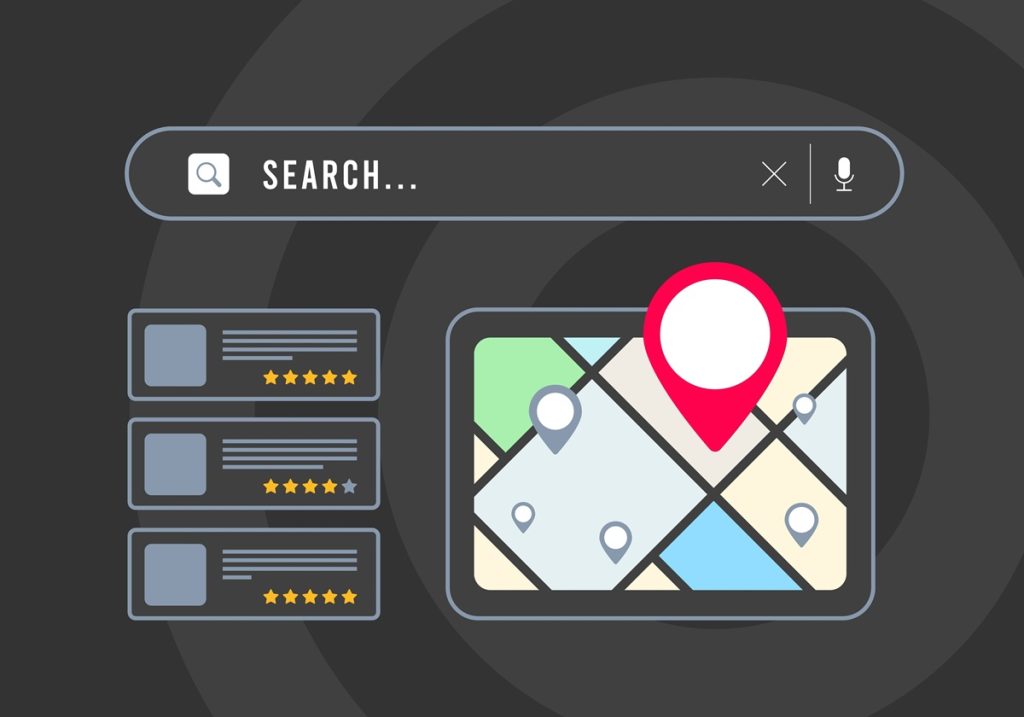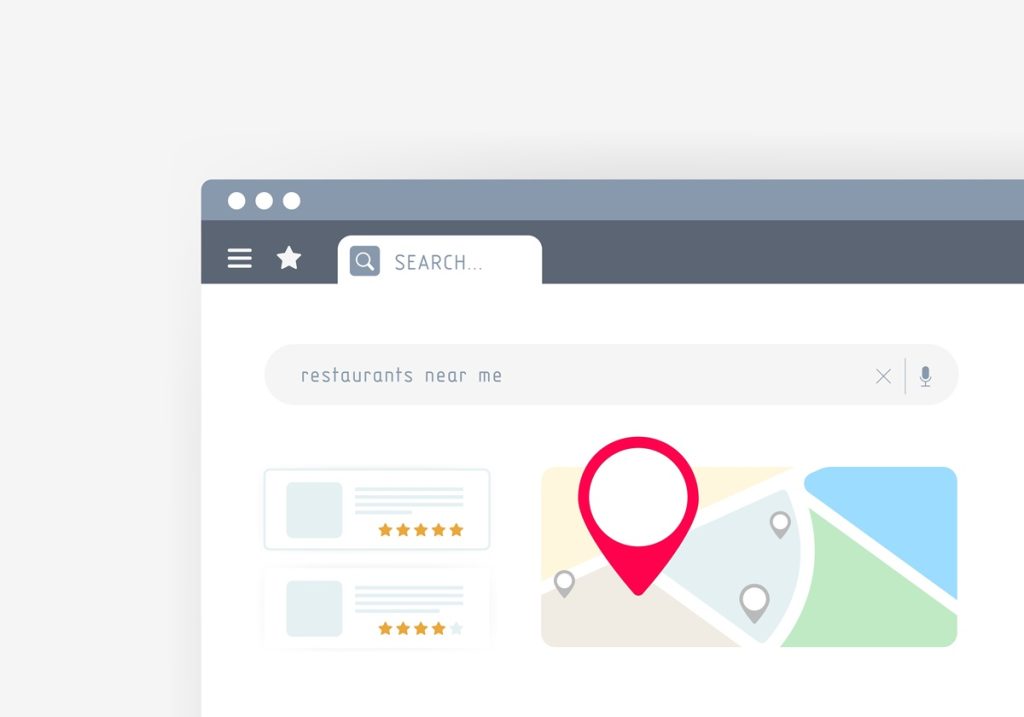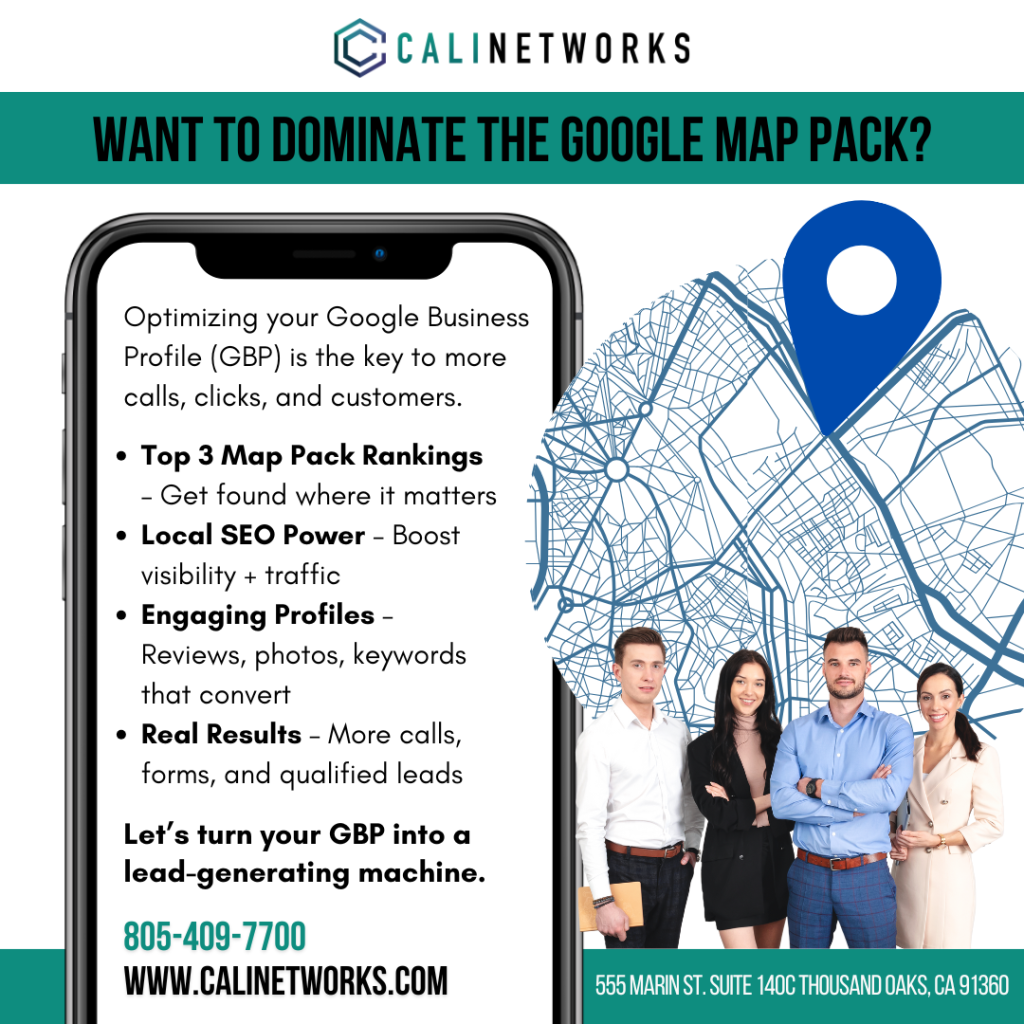- What is Local SEO and Why It Matters
- Updated Local SEO Statistics
- The Local Search Revolution
- Core Local SEO Ranking Factors
- Essential Local SEO Strategies
- Advanced Local SEO Techniques
- Measuring Local SEO Success
- Common Challenges and Solutions
- Future of Local SEO
- Frequently Asked Questions
- Local SEO Optimization Recap
Why It’s Critical for Business Growth and How to Dominate Local Search
Local SEO represents a critical digital marketing strategy for businesses serving specific geographic areas, optimizing online presence to attract customers from location-based searches. With 80% of U.S. consumers searching for local businesses weekly and 88% of local mobile searches resulting in a call or visit within 24 hours, mastering local SEO can dramatically impact foot traffic, phone inquiries, and revenue.
Key Takeaways:
- 46% of all Google searches have local intent
- 78% of local mobile searches result in offline purchases
- Local SEO delivers an average ROI of 2.5 times the investment
- 42% of users click on Google Map Pack results during local searches
What is Local SEO and Why It Matters
Understanding Local SEO: Definition and Scope
Local SEO is the practice of optimizing your online presence to attract more business from relevant local searches on Google and other search engines. It focuses on optimizing for searches with local intent, whether explicit (including location modifiers) or implicit (where search engines infer local intent based on the query type).
Key Differentiators from Traditional SEO
Geographic Relevance
- Optimization targets specific geographic areas rather than broad, national, or global audiences
Local Ranking Factors
- Unique ranking signals including Google Business Profile, proximity to searcher, and local citations
Map Pack Visibility
- Competition for the coveted 3-pack local results that appear above organic listings
Local Intent Queries
- Focus on searches indicating immediate action or local service needs
The Local Search Ecosystem
Primary Components Include:
- Google Business Profile (GBP)
- The cornerstone of local SEO
- Provides direct control over business appearance in Google Search and Maps
- Influences map pack rankings and knowledge panel information
- Local Citations
- NAP+W (Name, Address, Phone, Website) mentions across the web
- Builds local relevance and trust signals
- Consistent citations across directories strengthen local authority
- Localized Content
- Website content optimized for local keywords and service areas
- Location pages, local blog content, and area-specific landing pages
- Reviews and Reputation
- Customer reviews on multiple platforms
- Influences both rankings and consumer decisions
- Review quantity, quality, and recency impact performance
Updated Local SEO Statistics
Consumer Search Behavior
Daily Search Habits:
- 80% of U.S. consumers search for local businesses weekly
- 32% of consumers search for local businesses daily
- 96% of consumers use the internet to find local services
- 76% of consumers look up a business online before visiting
Search Intent and Conversion:
- 46% of all Google searches have local intent
- 78% of local mobile searches result in offline purchases
- 88% of consumers who conduct a local search visit or call within 24 hours
- 42% of users click on Google Map Pack results during local searches
Mobile and Voice Search Trends
Mobile Dominance:
- 60% of all searches occur on mobile devices
- 90% of consumers use mobile devices for local business information
- “Near me” searches have increased by over 500% in recent years
- 50% of consumers who conduct local searches visit stores within a day
Voice Search Growth:
- 58% of consumers have used voice search for local business information
- Nearly 1 in 3 users perform voice searches daily
- By 2025, 35% of U.S. adults will own a smart speaker
- 28% of people call a company after conducting a voice search
Business Impact and ROI
Financial Performance:
- The general SEO market projected to reach an estimated $75 – $125 billion by 2025
- Average ROI of 2.5 to 7.5 times the investment in local SEO
- Customers are 2.5x more likely to visit businesses with complete Google Business Profiles
- Verified businesses receive over 21,643 views annually in Google searches

Why Local Search SEO Is Critical for Business Success
1. Capturing High-Intent Local Searches
The Intent-to-Action Pipeline
Local searches demonstrate exceptional commercial intent, with specific statistics revealing:
- 76% of people who search nearby on smartphones visit a related business within 24 hours
- 28% of searches for something nearby result in a purchase
- 78% of location-based mobile searches result in offline purchases
Micro-Moments That Matter
Google identifies four key micro-moments where local SEO captures customers:
- “I-want-to-know” moments: Researching local options
- “I-want-to-go” moments: Looking for nearby locations
- “I-want-to-do” moments: Seeking local services or experiences
- “I-want-to-buy” moments: Ready to purchase locally
2. Mobile-First Consumer Behavior
The Mobile Local Search Dominance
Mobile devices account for approximately 60% of all searches, with an even higher percentage for local queries:
- 90% of consumers use mobile devices to search for local business information
- “Near me” searches have increased by over 500% in recent years
- 50% of consumers who conduct local searches visit stores within a day
Voice Search Acceleration
With smart speakers and voice assistants proliferating, voice searches are reshaping local SEO:
- 58% of consumers have used voice search for local business information
- Voice queries require optimization for natural language and conversational keywords
- 75% of U.S. families will own a smart speaker by 2025 and beyond
3. Competitive Advantage in Local Markets
Leveling the Playing Field
Local SEO enables small and medium businesses to compete effectively with larger corporations by:
- Dominating specific geographic markets where national brands may have less focus
- Building stronger community connections and local relevance signals
- Leveraging local knowledge and relationships for content and link building
- Responding faster to local market changes and opportunities
First-Mover Advantages
In many local markets, comprehensive local SEO remains underutilized, creating opportunities for businesses that invest early to establish dominant positions.
4. Cost-Effectiveness and ROI
Superior Return on Investment
Local SEO delivers exceptional ROI through:
- Free Google Business Profile listings that drive significant traffic
- Lower competition for local keywords compared to broad terms
- Higher conversion rates from locally-targeted traffic
- Compound benefits as local authority builds over time
Budget-Friendly Implementation
Unlike paid advertising requiring continuous investment, many local SEO tactics require time investment rather than significant financial resources.
5. Building Trust and Credibility
Local Validation Signals
Appearing in local search results, particularly the map pack, provides immediate credibility. Consumers trust Google’s local recommendations, and businesses featured prominently benefit from this implicit endorsement.
Review-Driven Trust Building
Local SEO emphasizes review acquisition and management, creating a virtuous cycle where positive reviews improve rankings while simultaneously building consumer trust.

Core Local SEO Ranking Factors
Google’s Local Algorithm Components
The Three Pillars of Local Ranking:
1. Relevance (How Well Your Business Matches the Search Query)
Optimization Strategies:
- Complete business information in Google Business Profile
- Relevant categories and attributes selection
- Content alignment with local search intent
- Detailed service area and product descriptions
2. Distance (Proximity Between Business and Searcher)
Optimization Tactics:
- Optimize for multiple locations with separate pages
- Target neighborhood-specific keywords
- Create content for various service areas
- Build citations in different geographic regions
3. Prominence (How Well-Known and Reputable Your Business Is)
Prominence Factors:
- Review quantity, quality, and velocity
- Backlink profile and domain authority
- Citation consistency and volume
- Brand search volume and mentions
Critical Local Ranking Factors by Weight

Google Business Profile Optimization (25% of ranking factors)
- Claimed and verified listing
- Complete business information
- Accurate categories selection
- Regular posts and updates
- Photo and video uploads
- Q&A management
- Product and service additions
- Frequent activity on the GBP profile
On-Page SEO Signals (20% of ranking factors)
- NAP consistency with GBP
- Local keyword optimization
- Location pages for multi-location businesses
- Local schema markup implementation
- Mobile optimization
- Page speed and Core Web Vitals
Link Signals (16% of ranking factors)
- Local backlinks from relevant sources
- Domain authority of linking sites
- Anchor text relevance
- Citation consistency across the web
Review Signals (15% of ranking factors)
- Review quantity and velocity
- Review sentiment and ratings
- Response rate and quality
- Review diversity across platforms
Essential Local SEO Strategies
Google Business Profile Mastery
Complete Profile Optimization
Essential Elements to Optimize:
- Business Information
- Business name (exact match, no keyword stuffing)
- Address (consistent formatting across web)
- Phone number (local number preferred)
- Business hours (including special hours)
- Website URL
- Categories and Descriptions
- Primary category (most important ranking factor)
- Secondary categories (up to 9 additional)
- Business description (750 characters, keyword-rich)
- Services and products sections
- Visual Content
- Logo and cover photos
- Interior and exterior photos
- Team photos
- Product/service images
- Regular photo updates (3-5 per week)
Ongoing Management Activities
Weekly Tasks:
- Publish Google Posts with local keywords
- Upload new photos and videos
- Monitor and respond to Q&A
- Update special hours for holidays
- Create offers and event promotions
Daily Tasks:
- Respond to reviews within 24-48 hours
- Monitor business insights and metrics
- Check for duplicate listings
- Update business information as needed
Local Content Strategy
Location-Specific Content Creation
High-Impact Content Types:
- Local Landing Pages
- Service + city combinations
- Neighborhood-specific pages
- “Local” optimized content for “Near me”
- Local event coverage
- Community-Focused Blog Content
- Local news and events
- Community partnerships
- Local customer spotlights
- Area guides and resources
- Location Pages for Multi-Location Businesses
- Unique content for each location (500+ words)
- Embedded Google Maps
- Local reviews and testimonials
- Staff profiles and photos
- Location-specific offers
- Nearby landmarks and directions
Local Keyword Strategy
Target Keyword Types:
- Primary Local Keywords: [Service] + [City]
- Secondary Keywords: [Service] + [Neighborhood]
- Long-tail Keywords: [Service] + “near me”
- Voice Search Keywords: Question-based queries
- Commercial Intent: [Service] + [City] + “best/top/cheap”
Citation Building and Management
Strategic Citation Development
Priority Citation Sources:
- Major Data Aggregators
- Foursquare
- Data Axle (formerly Data & Marketing Solutions)
- Neustar Localeze
- Acxiom
- General Directories
- Yelp
- Yellow Pages
- Bing Places for Business
- Apple Maps Connect
- Industry-Specific Directories
- Vertical-specific platforms
- Professional associations
- Trade organization listings
- Local Directories
- Chamber of Commerce
- Local business associations
- City and county websites
- Local newspapers and media
- Social Platforms
- Facebook Business
- LinkedIn Company Page
- Instagram Business
- X (Previously Twitter) Business
- Tiktok
- YouTube Channel
Citation Consistency Protocol
Standardization Requirements:
- NAP+W Format: Use identical formatting across all platforms
- Business Descriptions: Maintain consistent messaging
- Business Hours: Keep accurate and synchronized
- Categories: Use consistent business categories
- URLs: Ensure proper website linking
Quality Control Process:
- Regular Audits: Monthly citation audits
- Duplicate Monitoring: Check for and remove duplicates
- Accuracy Verification: Ensure all information is current
- Update Synchronization: Update all platforms simultaneously
Review Generation and Management
Systematic Review Acquisition
Proven Review Generation Strategies:
- Email Campaigns
- Post-service follow-up emails
- Automated drip campaigns
- Personalized review requests
- Timing optimization (24-48 hours post-service)
- SMS Review Requests
- Text message campaigns
- QR code implementations
- Point-of-sale requests
- Mobile-optimized review links
- In-Person Strategies
- Staff training on review requests
- Review cards with purchases
- Incentivized campaigns (following guidelines)
- Digital displays and signage
Review Response Framework
Best Practices for All Reviews:
- Response Timing
- Respond within 24-48 hours
- Prioritize negative reviews
- Acknowledge positive feedback
- Response Content
- Thank reviewers personally
- Address specific points mentioned
- Include keywords naturally
- Offer offline resolution for issues
- Showcase commitment to satisfaction
- Professional Tone
- Maintain consistent brand voice
- Stay professional with negative reviews
- Show appreciation for feedback
- Avoid defensive responses
Local Link Building Tactics
Community-Based Link Acquisition
Effective Local Link Strategies:
- Local Partnerships
- Business-to-business partnerships
- Vendor and supplier relationships
- Customer testimonial exchanges
- Cross-promotional opportunities
- Community Involvement
- Local sponsorships and events
- Chamber of Commerce membership
- Community organization participation
- Local charity support
- Media and Content
- Local media relationships
- Guest posting for local blogs
- Local influencer collaborations
- Press release distribution
- Educational Initiatives
- Local scholarship programs
- Educational workshops
- Industry expertise sharing
- Speaking engagements
Advanced Local SEO Techniques
Local Schema Markup Implementation
Essential Schema Types for Local Businesses
Core Schema Markup:
{
"@context": "https://schema.org",
"@type": "LocalBusiness",
"name": "Your Business Name",
"address": {
"@type": "PostalAddress",
"streetAddress": "123 Main Street",
"addressLocality": "City",
"addressRegion": "State",
"postalCode": "12345",
"addressCountry": "US"
},
"telephone": "+1-555-123-4567",
"openingHours": [
"Mo-Fr 09:00-17:00",
"Sa 09:00-12:00"
],
"url": "https://www.yourbusiness.com",
"aggregateRating": {
"@type": "AggregateRating",
"ratingValue": "4.5",
"reviewCount": "150"
}
}
Additional Schema Types:
- Review and AggregateRating markup
- Event schema for local events
- Product schema for inventory
- FAQ schema for common questions
- Service area schema for coverage regions
Voice Search Optimization
Conversational Keyword Strategy
Optimization Tactics:
- Natural Language Targeting
- Focus on question-based keywords
- “Who,” “what,” “where,” “when,” “why,” “how” queries
- Conversational long-tail phrases
- Local intent modifiers
- Content Optimization
- FAQ sections with natural language
- “Near me” variations
- Speakable schema markup
- Featured snippet optimization
- Technical Requirements
- Mobile page speed excellence
- Voice search-friendly content structure
- Local business schema implementation
- SSL certificate implementation
Local Landing Page Architecture
Service + Location Combinations
Strategic Page Creation:
- Primary Service Pages
- [Service] + [City] combinations
- [Service] + [Neighborhood] variations
- Emergency service pages
- Seasonal service offerings
- Commercial vs. Residential
- Separate pages for different customer types
- Tailored content and offerings
- Specific contact information
- Relevant case studies and testimonials
- Page Structure Optimization
- Unique, valuable content (500+ words)
- Local keywords in title tags and headers
- NAP information is prominently displayed
- Local testimonials and reviews
- Location-specific images
- Clear calls-to-action
Measuring Local SEO Success
Key Performance Indicators
Visibility Metrics
Search Result Performance:
- Local pack rankings for target keywords
- Local finder rankings and impressions
- Google Maps rankings and visibility
- Organic local search rankings
- Search impression share
Google Business Profile Insights:
- Total searches (discovery + direct)
- Profile views and website clicks
- Direction requests
- Phone calls from listing
- Photo views and engagement
Engagement Metrics
Website Performance:
- Organic traffic from local searches
- Click-through rates on local listings
- Bounce rate for location pages
- Time on site for local visitors
- Conversion rate by traffic source
Review and Reputation Metrics:
- Total review count across platforms
- Average star rating
- Review response rate
- Review sentiment analysis
- Review velocity (new reviews per month)
Conversion Metrics
Business Impact Measurements:
- Store visits (when available through Google Analytics GA4)
- Phone call conversions
- Form submissions by location
- Online orders for pickup
- Appointment bookings
- Revenue attribution by location
Tools and Analytics Platforms
Essential Local SEO Tools
Tracking and Monitoring:
- Free Tools
- Google Business Profile Insights
- Google Analytics (with location tracking)
- Google Search Console
- Google My Business API
- Paid Platforms
- Local ranking trackers (BrightLocal, SEMRush, Whitespark)
- Citation tracking tools (Moz SEMRush, Local, Yext)
- Review monitoring platforms (Podium, Birdeye)
- Call tracking software (CallRail, CallTrackingMetrics)
- All-in-One Solutions
- BrightLocal Local SEO Platform
- Semrush Local SEO Toolkit
- Moz Local
- Yext Knowledge Manager

Common Local SEO Challenges and Solutions
Challenge 1: Managing Multiple Locations
Solution Framework:
Centralized Management System
- Implement unified GBP management platform
- Standardize NAP information across locations
- Create consistent posting schedule
- Monitor all locations from single dashboard
Location-Specific Optimization
- Develop unique content for each location
- Build location-specific citation profiles
- Implement individual review generation strategies
- Create local area content and partnerships
Challenge 2: Competing with Spam Listings
Combat Strategies:
Defensive Tactics
- Report spam listings to Google through proper channels
- Monitor local search results for fake competitors
- Document evidence of spam (fake addresses, keyword stuffing)
- Focus on building legitimate, strong local signals
Offensive Strategies
- Increase legitimate review velocity
- Enhance local engagement metrics
- Build stronger citation and link profiles
- Improve overall local authority
Challenge 3: Service Area Businesses (SABs)
SAB Optimization Approach:
Google Business Profile Setup
- Hide street address in GBP (if applicable)
- Define clear service areas
- Use service area schema markup
- Focus on service-related categories
Content Strategy
- Create service area pages for each region
- Build citations without street address
- Develop local partnerships in service areas
- Focus on service area-specific content
Challenge 4: Review Management at Scale
Scalable Review Strategy:
Automation Systems
- Implement automated review request workflows
- Set up review monitoring alerts
- Create response templates for common scenarios
- Use review management platforms for efficiency
Quality Control
- Train staff on review request best practices
- Monitor review authenticity
- Respond personally to negative reviews
- Maintain consistent response quality
Future of Local SEO
Emerging Trends and Preparations
Artificial Intelligence Integration
AI-Powered Local Search Features
- Personalized results based on user behavior and preferences
- AI-driven business recommendations
- Automated local content generation
- Enhanced voice search capabilities
Preparation Strategies:
- Focus on comprehensive business information
- Prioritize user satisfaction metrics
- Invest in quality customer experiences
- Maintain accurate and detailed business data
Augmented Reality (AR) Navigation
AR in Local Discovery
- AR features in Google Maps and Apple Maps
- Visual business information overlay
- Interactive local business discovery
- Enhanced navigation experiences
AR-Ready Optimization:
- Ensure accurate location data
- Create visual content for AR integration
- Optimize for visual search elements
- Prepare for AR-based local advertising
Zero-Click Searches and Direct Answers
Information Consumption Trends
- More queries answered directly in search results
- Featured snippets for local questions
- Knowledge panel optimization
- Direct answer box appearances
Optimization Strategies:
- Structure content for featured snippets
- Optimize for question-based queries
- Create comprehensive FAQ sections
- Focus on direct answer formats
Hyper-Local Personalization
Ultra-Targeted Local Search
- Neighborhood-level targeting
- Personal preference integration
- Behavioral pattern recognition
- Micro-location optimization
Future-Proofing Tactics:
- Develop granular location targeting
- Create hyper-local content
- Build neighborhood-specific authority
- Invest in micro-local partnerships
Common Local SEO Questions and Answers
General Local SEO Questions
How long does it take to see local SEO results?
Local SEO results typically begin showing within 3-6 months, with significant improvements often visible within 6-12 months. However, factors like competition level, current online presence, and implementation consistency can affect timelines.
What’s the difference between local SEO and regular SEO?
Local SEO focuses on geographic-specific searches and local ranking factors like Google Business Profile, local citations, and proximity to searchers. Regular SEO targets broader, non-location-specific keywords and relies more on traditional ranking factors.
How important are online reviews for local SEO?
Online reviews are critical for local SEO, representing approximately 15% of local ranking factors. They influence both search rankings and consumer decisions, with 88% of consumers trusting online reviews as much as personal recommendations.
Google Business Profile Questions
Should I respond to all reviews, including positive ones?
Yes, responding to all reviews is recommended. It shows active engagement, improves local search signals, and demonstrates customer service commitment. Aim to respond within 24-48 hours.
How often should I post on my Google Business Profile?
Post at least once per week on your Google Business Profile. Regular posting signals active business management and can improve local search visibility.
Can I use the same Google Business Profile for multiple locations?
No, each business location needs its own Google Business Profile. Use separate profiles for each location to optimize for local search effectively.
Technical Local SEO Questions
Do I need a separate website page for each location?
For multi-location businesses, yes. Each location should have a unique landing page with location-specific content, NAP information, and local optimization elements.
How important is mobile optimization for local SEO?
Mobile optimization is crucial for local SEO, as 60% of local searches occur on mobile devices. Ensure fast loading times, mobile-friendly design, and easy-to-use contact information.
Should I hide my address if I’m a service area business?
If you serve customers at their locations rather than at your business address, you should hide your street address in your Google Business Profile while still defining your service areas.
Local SEO Optimization for Digital Marketing Recap
Local SEO stands as one of the most impactful digital marketing investments for businesses serving specific geographic markets. Its ability to connect high-intent searchers with relevant local businesses creates a direct path from online visibility to offline revenue.
The Strategic Imperative
The importance of local SEO extends beyond mere visibility—it builds community presence, establishes local authority, and creates sustainable competitive advantages that compound over time. For businesses ranging from single-location shops to multi-location enterprises, local SEO provides measurable returns through:
- Increased foot traffic from local search visibility
- Higher phone call volume from optimized business listings
- Improved conversion rates from locally-targeted traffic
- Enhanced brand credibility through positive review management
- Cost-effective customer acquisition compared to paid advertising
Future-Proofing Your Local Presence
As consumer behavior continues shifting toward mobile-first, voice-activated, and immediate-gratification search patterns, businesses that master local SEO position themselves at the forefront of their local markets. The investment in local SEO today isn’t just about capturing current opportunity—it’s about building the foundation for long-term local market dominance.
Taking Action
The beauty of local SEO lies in its accessibility. Whether you’re a small business owner managing your own marketing or an enterprise coordinating multiple locations, the principles remain consistent:
- Be visible where local customers search
- Provide accurate and comprehensive information
- Build trust through reviews and engagement
- Create genuine value for your local community
Master these elements, and local SEO becomes not just a marketing tactic but a sustainable growth engine for your business.
Next Steps
Ready to dominate your local market? Start by:
- Claiming and optimizing your Google Business Profile
- Conducting a local SEO audit of your current presence
- Implementing citation management across key directories
- Developing a review generation strategy
- Creating location-specific content for your target areas
- Contact a Digital Marketing Company to help guide you to optimizing your website and brand
The local search landscape continues to evolve, but businesses that commit to comprehensive local SEO strategies will consistently outperform competitors who view local optimization as optional. Your local market dominance starts with the decision to prioritize local SEO today.

CaliNetworks
555 Marin St Suite 140c
Thousand Oaks, CA 91360
805-409-7700



